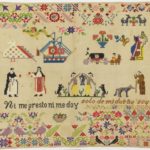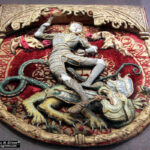Technique: Richelieu
Place of Origin: France
Earliest approximate date: 14th – 16th centuries
History: Richelieu embroidery enjoys a diverse and itinerant history. Richelieu’s origins can be traced back to 14th century Italy and the Renaissance, where it was known as punto tagliato, which literally translates to “cut point” in Italian. Today, we call this technique “cutwork.”
Punto Tagliato was the first form of cutwork embroidery. Nuns in monasteries stitched cutwork textiles for the church. The technique quickly drew the keen interest of the upper classes, nobility, and royalty.

Purportedly, the French court imported Punto Tagliato pieces from Italy. Cutwork embroidery then exploded in popularity under a new name: Richelieu. Named after Cardinal Richelieu, a 17th century French clergyman and statesman who served under King Louis XIII of France. It is said that Cardinal Richelieu wore many garments that featured the Richelieu embroidery technique, although finding examples has proven difficult!

Materials, Techniques, and Stitches: Richelieu is a cutwork and, most typically, a whitework technique. Embroiderers work design outlines in buttonhole stitch*; with the fabric thus reinforced, they then cut away sections of the fabric. Bars, or “brides” create connections between the open areas, further reinforcing the stability of the fabric. Traditionally, fine linen is used, although cotton lawn may also be used. Richelieu has also been worked on silk organza in some cases.
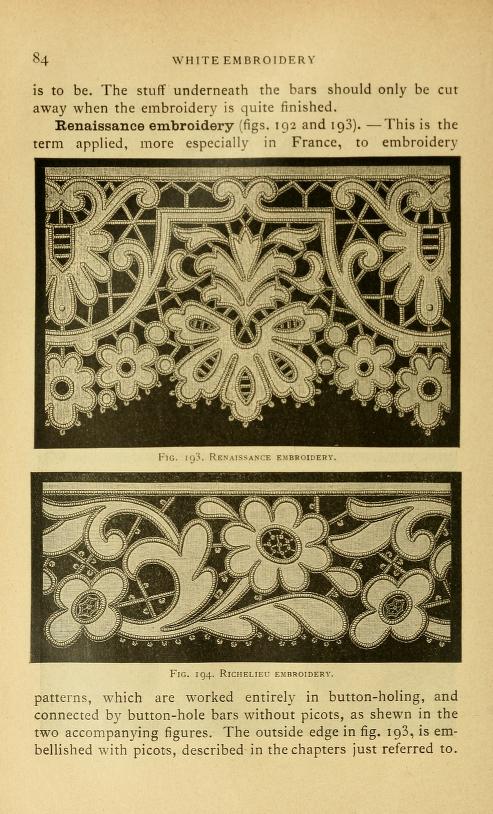
*It is important to mention that there is contention within the needlework community over Richelieu’s starring stitch. EGA was alerted to the buttonhole stitch versus blanket stitch debate by our very own Marion Scoular, who writes:
“This is a controversy that I don’t seem to get through to people but it is explained in detail in my book, Advice is… for listening to – not necessarily taking! Canvas stitch, surface stitchery, counted thread finishing, and much, much more! Having taught dressmaking in English schools for four years, my students know that buttonhole stitch is used for buttonholes. The only embroidery that I know it is used in is Ruskin Lace, which I learned in the Lake District in England. The stitch used in Richelieu is NOT buttonhole stitch. It is blanket stitch. Check pages 38-42 in my book. I’ll never win on this one but will go down fighting!”

Marion’s book is a wealth of information, and a worthy guide for every needleworker’s library. If you’re interested in procuring a copy, you can contact Marion directly at marionscoular@gmail.com or on her landline: 770-497-0648.
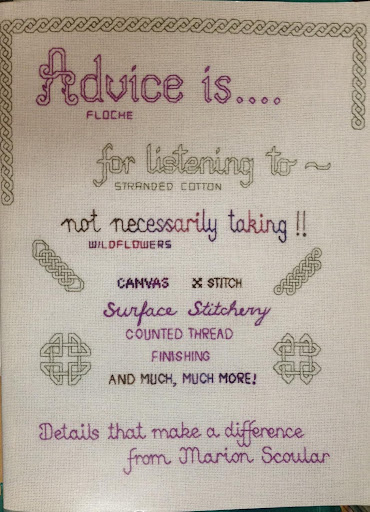
In Richelieu, the first step is stitching parallel lines of running stitches to demarcate and outline the design. Following that, buttonhole or blanket stitches are worked over the running stitches, with brides stitched in to connect the areas that required reinforcement. The “brides” also feature buttonhole or blanket stitching, and sometimes picot embellishments. Once the full design is completed, the fabric around and between stitches and bars may be cut away.

As mentioned, Richelieu featured in garments, but was also often used in home furnishings: table runners and tablecloths, napkins, and other home accents. Sometimes, a bold color fabric was placed behind Richelieu lace to showcase the cutwork design.
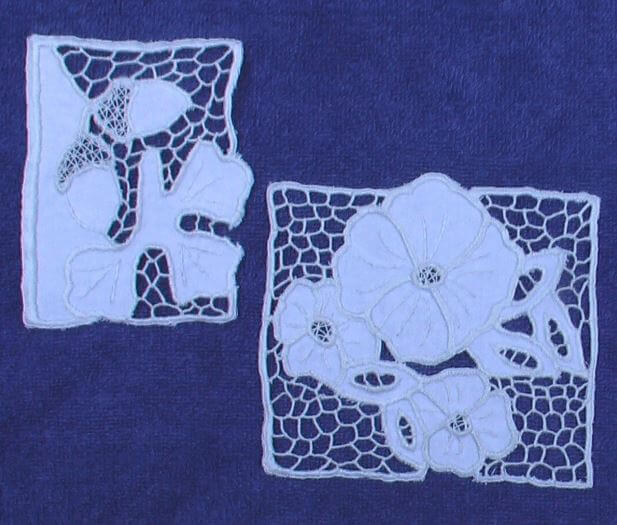
Interested in exploring more cutwork techniques? EGA members can access the Slinge – Croatian Cutwork Petite Project for FREE! (Get it soon, this project is being retired on May 31st!
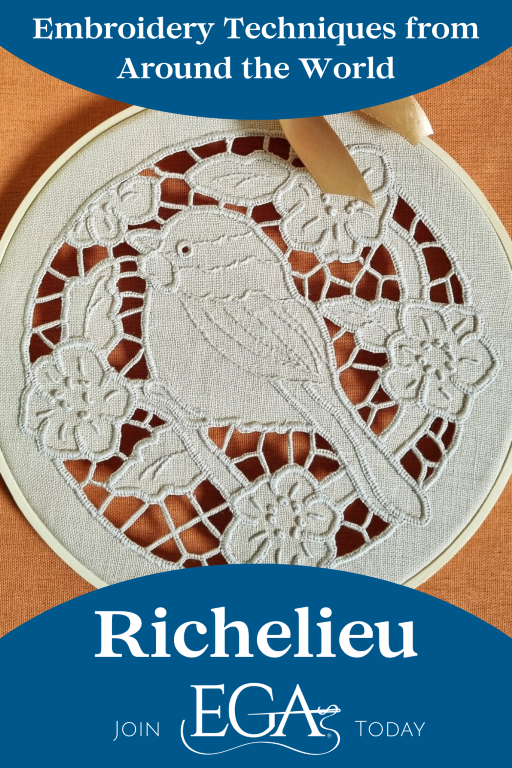
Sources
(n.d.). Cutwork embroidery. Wikipedia. https://en.wikipedia.org/wiki/Cutwork
(n.d.). Revisiting Richelieu: Beautiful Cutwork Embroidery. Needle ‘n Thread. https://www.needlenthread.com/2023/09/revisiting-richelieu-beautiful-cutwork-embroidery.html
(n.d.). Richelieu. Textile Research Center. https://www.trc-leiden.nl/trc-needles/regional-traditions/europe-and-north-america/embroideries/richelieu-work
(n.d.). Cutwork embroidery techniques. Needlework Tips & Techniques. https://www.needlework-tips-and-techniques.com/cutwork-embroidery.html
(n.d.). Richelieu. Encyclopedia of Needlework. https://archive.org/details/encyclopediaofne00dill/page/84/mode/2up?view=theater&q=Richelieu
(n.d.). Mme Corbière’s Cutwork. Royal Alberta Museum. https://royalalbertamuseum.ca/blog/mme-corbieres-cutwork
(n.d.). Stitching the Story of Cutwork Embroidery, One of the Most Luxurious Goods in Europe. Ancient Origins. https://www.ancient-origins.net/artifacts-other-artifacts/stitching-story-cutwork-embroidery-one-most-luxurious-goods-europe-005346
(n.d.). Italian Lace History. World4 Costume Culture History. https://world4.eu/italian-lace/
(n.d.). Punto Tagliato. Tatter. https://tatter.org/events/punto-tagliato-european-cut-work-embroidery/


